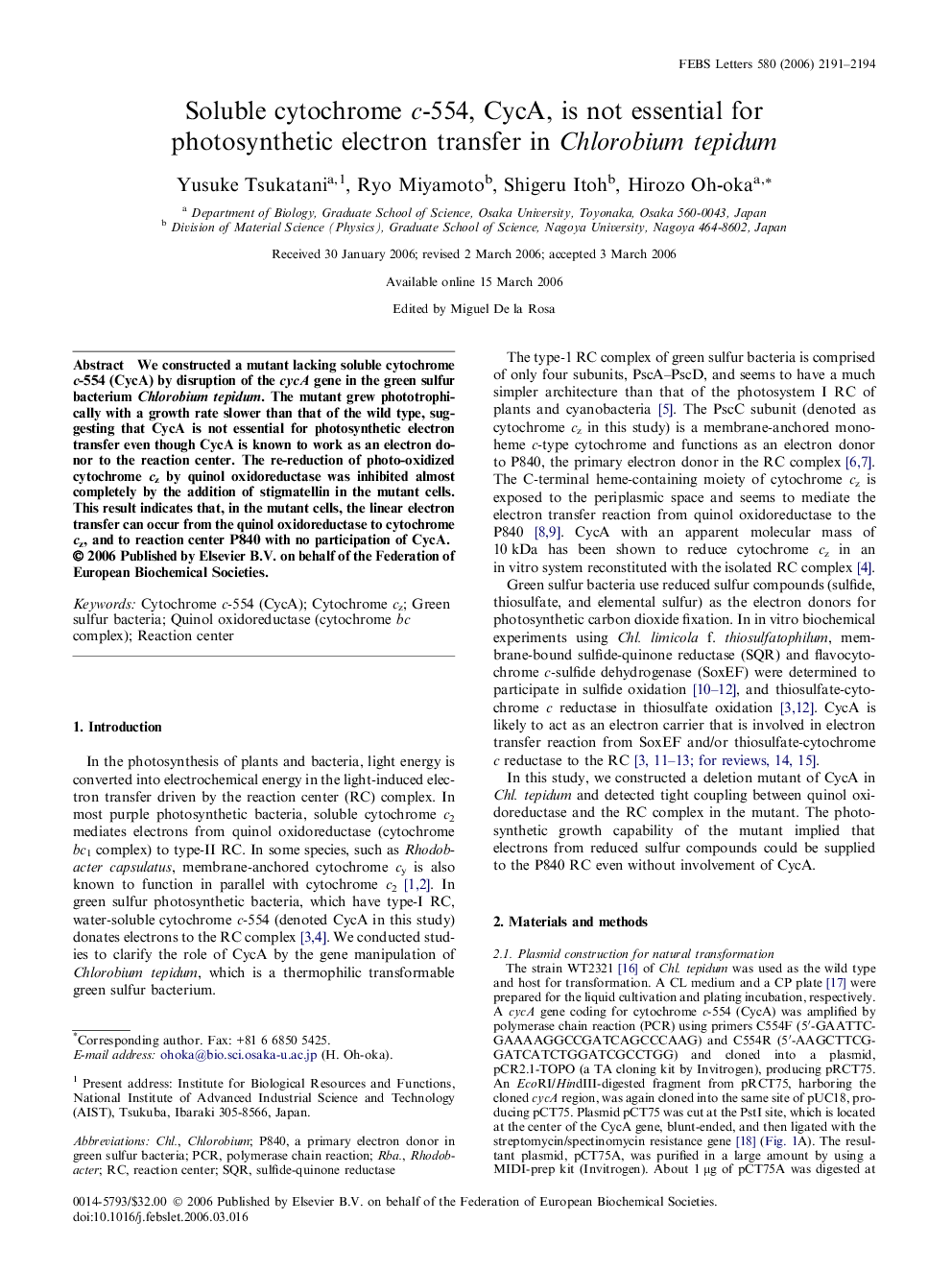| Article ID | Journal | Published Year | Pages | File Type |
|---|---|---|---|---|
| 2052920 | FEBS Letters | 2006 | 4 Pages |
Abstract
We constructed a mutant lacking soluble cytochrome c-554 (CycA) by disruption of the cycA gene in the green sulfur bacterium Chlorobium tepidum. The mutant grew phototrophically with a growth rate slower than that of the wild type, suggesting that CycA is not essential for photosynthetic electron transfer even though CycA is known to work as an electron donor to the reaction center. The re-reduction of photo-oxidized cytochrome cz by quinol oxidoreductase was inhibited almost completely by the addition of stigmatellin in the mutant cells. This result indicates that, in the mutant cells, the linear electron transfer can occur from the quinol oxidoreductase to cytochrome cz, and to reaction center P840 with no participation of CycA.
Related Topics
Life Sciences
Agricultural and Biological Sciences
Plant Science
Authors
Yusuke Tsukatani, Ryo Miyamoto, Shigeru Itoh, Hirozo Oh-oka,
